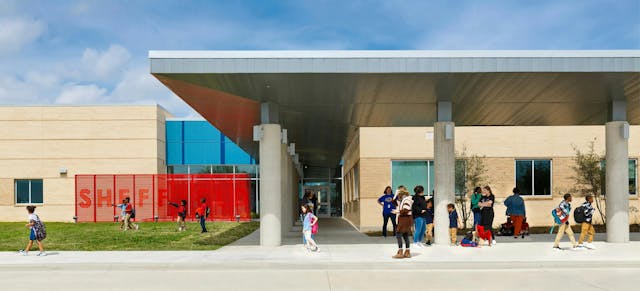Making the case for K-12 energy efficiency – Building Design+Construction

Energy Efficiency Challenges and Opportunities in Texas K-12 Schools
Overview of Energy Costs and Efficiency in Texas
Research indicates significant challenges in calculating energy efficiency in Texas, primarily due to the state’s relatively low energy costs. According to the U.S. Energy Information Administration (EIA), the average retail price of electricity in Texas is:
- 30% lower than the national average
- 63% less expensive than in California
This cost disparity results in a longer payback period for energy efficiency investments compared to other states at current electricity rates.
Long-Term Investment Perspective
Kate Mraw, Director of K-12 at LPA, emphasizes the importance of a long-term view on energy efficiency investments:
- Return on investment may take up to 10 years
- Building lifespans typically range from 50 to 100 years
This perspective supports sustainable development by encouraging investments that align with SDG 7: Affordable and Clean Energy and SDG 11: Sustainable Cities and Communities.
Enhancing Campus Resilience and Energy Independence
Beyond operational cost savings, energy strategies contribute to the resilience of school campuses. Texas experiences the third-highest rate of power outages in the U.S., with nearly 20 hours of outages recorded in 2021 (EIA data). Reducing dependence on the electrical grid enhances the ability of schools to operate under all conditions, benefiting students and the wider community.
According to Drone, making schools less grid-dependent supports:
- Continuity of education during outages
- Community resilience and safety
This aligns with SDG 9: Industry, Innovation, and Infrastructure and SDG 13: Climate Action.
Health and Educational Benefits of Sustainable Schools
More sustainable school environments promote health and well-being by incorporating features such as natural daylight, reduced energy demand, and elimination of fossil fuel combustion. These elements contribute to:
- Energy savings
- Improved student and staff well-being
- Educational opportunities through visible science and conservation practices
These benefits support SDG 3: Good Health and Well-being and SDG 4: Quality Education, fostering environments that are both healthy and educational.
1. Sustainable Development Goals (SDGs) Addressed or Connected to the Issues Highlighted in the Article
- SDG 7: Affordable and Clean Energy
- The article discusses energy efficiency, energy prices, and energy independence, directly relating to ensuring access to affordable, reliable, sustainable, and modern energy.
- SDG 11: Sustainable Cities and Communities
- The focus on resilient campuses and sustainable schools ties into making cities and human settlements inclusive, safe, resilient, and sustainable.
- SDG 3: Good Health and Well-being
- Healthier schools with natural daylight and reduced fossil fuel combustion promote well-being, aligning with this goal.
- SDG 13: Climate Action
- Reducing fossil fuel combustion and promoting energy efficiency contribute to combating climate change and its impacts.
2. Specific Targets Under Those SDGs Identified Based on the Article’s Content
- SDG 7 Targets
- Target 7.3: By 2030, double the global rate of improvement in energy efficiency.
- Target 7.1: Ensure universal access to affordable, reliable, and modern energy services.
- SDG 11 Targets
- Target 11.5: Reduce the number of deaths and the number of people affected by disasters, including power outages, by building resilient infrastructure.
- Target 11.6: Reduce the adverse per capita environmental impact of cities, including energy consumption.
- SDG 3 Targets
- Target 3.9: Reduce illnesses and deaths from hazardous chemicals and air, water, and soil pollution and contamination.
- SDG 13 Targets
- Target 13.1: Strengthen resilience and adaptive capacity to climate-related hazards and natural disasters.
- Target 13.2: Integrate climate change measures into policies and planning.
3. Indicators Mentioned or Implied in the Article to Measure Progress Towards the Identified Targets
- Energy Prices and Efficiency
- Average retail price of electricity compared to national and other states (implied indicator for affordability and efficiency improvements).
- Payback period for energy efficiency investments (implied indicator for rate of improvement in energy efficiency).
- Power Outages
- Number of hours of power outages experienced by customers (indicator of resilience and reliability of energy infrastructure).
- Building Lifespan and Operational Savings
- Longevity of buildings (50 to 100 years) versus payback period for energy investments (implied indicator of sustainability and long-term benefits).
- Health and Well-being
- Presence of natural daylight and absence of fossil fuel combustion in schools (implied indicators for healthier environments and reduced pollution).
- Energy Independence and Resilience
- Ability of schools to operate independently of the grid during outages (implied indicator of resilience and adaptive capacity).
4. Table: SDGs, Targets and Indicators
| SDGs | Targets | Indicators |
|---|---|---|
| SDG 7: Affordable and Clean Energy |
|
|
| SDG 11: Sustainable Cities and Communities |
|
|
| SDG 3: Good Health and Well-being |
|
|
| SDG 13: Climate Action |
|
|
Source: bdcnetwork.com








